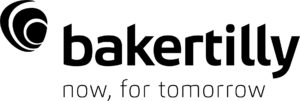
Opinions expressed in AGB blogs are those of the authors and not necessarily those of the institutions that employ them or of AGB.
This blog summarizes key takeaways from Baker Tilly’s Higher Ed Advisor podcast on strategy and fiscal resiliency. Listen here.
While COVID-19 has altered the higher education landscape significantly, fiscal pressures are nothing new to colleges and universities. For several years, institutional leaders have been concerned with a variety of issues, including:
- Affordability of student attendance
- Decreasing enrollment trends
- Increasing operating costs
- Expanding service expectations and needs
Now is the time for leaders to examine their institutional missions and required strategies for the future. In our last podcast, we talked about the need to potentially revisit and deeply assess an institution’s differentiators, market permission and strategic priorities. It is equally imperative to evaluate your current institutional footprint honestly to confirm optimal alignment of all resource allocations and commitments to help you achieve your strategic priorities – and ultimately, your mission.
Leaders must chart a path forward with specific details on how to navigate the current climate strategically to ensure institutional sustainability. This plan should comprehensively evaluate the full range of resource allocations, asset commitments and debts and liabilities within the context of environmentally-driven modifications to revenue sources and realities.
With this forward-looking mindset, institutions need to evaluate what they should be doing – but also, what they should stop doing. For example, perhaps some activities, programs or locations are no longer a good fit. Institutions need to keep their footprints manageable and maintainable. For many years, the idea of eliminating key activities, programs or locations was unthinkable. Now, everything needs to be on the table.
The hardest part is knowing where to start. Everything that you have come to know is changing – the industry, the environment, the regulations. Even what we know about COVID-19 is changing week-to-week. It’s vital to engage the right stakeholders and bring them together to help move your institution forward. In many ways, the action needs to be strategic planning on steroids. Minor changes are definitely needed. Drastic changes may be necessary.
To simplify and break down the approach, consider the process of change in five phases:
- Exploration – thinking big picture about what is possible
- Feasibility – considering whether what is possible is something that can realistically be accomplished
- Analysis and due diligence – taking a closer look at the financial and logistical aspects of potential solutions
- Approvals – getting the required approvals from governing bodies, faculty and other key stakeholders
- Execution – moving ahead with the plan for change once its designed, articulated, analyzed and approved
Within the context of this process as it relates to your institution, there are specific areas to explore.
- For instance, when it comes to your institution’s footprint from the standpoint of capital assets, are your spaces being used to their full potential? Could your course schedule be reconstructed to maximize usage? Are each of your assets truly necessary, or could any of those assets be liquidated and/or repurposed?
- Another area worth examining is human resources and institutional support operations. What supports to you have for assessing your human resource outlays across your institution? Do you have the tools you need to identify the return on investment and alignment with your strategic priorities? Are the services supporting students or differentiating your institution in any way? For baseline administrative operations, how are you ensuring they are being provided cost effectively?
- Meanwhile, academic and research programs – and the associated costs – present additional areas worth exploring. Institutions are conducting net revenue analyses and reconsidering whether to continue all current programs, particularly those that do not generate revenue or specifically result in positive student or academic impact.
- A school’s endowment – and especially any reserves in that endowment – is another area that many institutions are examining carefully. You need to weigh the risks and rewards associated with borrowing against your endowment.
- Additionally, another key area is revenue analysis – including tuition, the billing cycle for tuition, the impact of athletics and the revenue (or lack of revenue) that athletics are generating this academic year. Now may be a time to rethink all activities related to revenue to determine what is sustainable this year – and in the future.
Ultimately, the critical questions to ask are: What is your institution’s vision for the future? How do you realize that vision within the current context? Who should be involved? What are your opportunities? How will you know them when you see them? And how do you best align your path forward with these opportunities to maximize the likelihood of long-term fiscal success?
To answer these questions, you need to be comprehensive – and bold. Prepare thoroughly, think creatively and act daringly to turn your institution’s challenges into opportunities for strategic realignment and much-needed change.
Related Resources
- PODCAST – Higher Ed Advisor: realigning strategy and footprint to achieve fiscal resilience
- PODCAST – Higher Ed Advisor: Higher Ed Advisor: understanding the fiscal resiliency landscape and key considerations for higher education institutions
- PODCAST – Higher Ed Advisor: realigning strategy and footprint to achieve fiscal resilience
- WEBINAR – Fiscal Resiliency: Meeting the Challenge, Achieving the Possible
With Thanks to AGB Sustaining Sponsor – Baker Tilly
Christine Smith
Managing Director
Baker Tilly
Christine.Smith@BakerTilly.com
Raina Rose Tagle, Partner, Baker Tilly & Christine Smith, Managing Director, Baker Tilly


